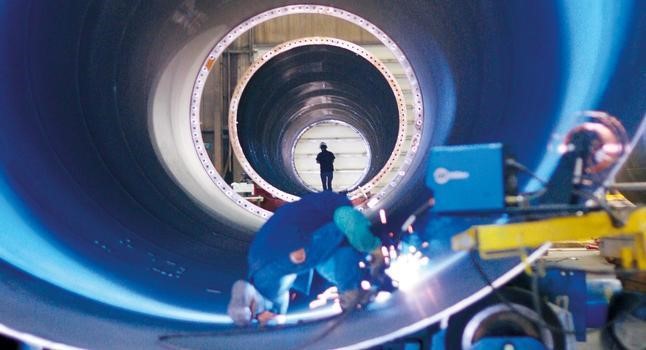Innovation, sophistication and creativity are words that are becoming increasingly common when describing the future of the Australian manufacturing industry. Presently, Australia’s manufacturing industry is experiencing an upsurge in activity, turnover and most importantly returns.
Truth be told, the rise of renewable energy in Australia has created economic opportunities that can’t be overlooked. As a matter of fact, the Pew Charitable Trust estimated the economic potential of the renewable energy sector to reach around $2.3 trillion in the next decade.
Similarly, the transition to renewable energy in manufacturing is one of the factors that has significantly enhanced the performance of the industry.
New investments, new export sectors, and new jobs are all up for grabs; however, securing these benefits for Australia would require astute political leadership today. Ideally, now is the right time for the Federal government to rethink its decisions concerning Australia’s energy market.
Australia’s Clean Energy Future
Treasurer Scott Morrison’s recent budget speech failed to mention any commitment from the government to renewable energy, however the Opposition leader, Mr. Bill Shorten was sure to mention the renewable industry in his response.
Shorten said that the Labor Party regarded renewables as a means to breathe a new lease of life into the manufacturing sector in Australia: “By 2030, there will be $2.5 trillion of investment in renewable energy in the Asia-Pacific. Australian workers should be collaborating with our universities and researchers to design, manufacture and export battery technology, solar panels and turbine parts. These are not niche markets or boutique industries. Embracing clean technology and renewable energy can revitalise advanced manufacturing in this country.”
“In the last two years, the global economy added 2 million renewable energy jobs – but Australia lost 2,600. The world is powering ahead – and we are going in the wrong direction. It’s time to turn things around.”
Labor Party will be battling in the coming election on the ticket of implementing a 50 per cent renewables target by 2030. The party also made a commitment to provide capital grant funding in future for the Australian Renewable Energy Agency (ARENA).
Kane Thornton, Clean Energy Council Chief Executive said, “While it is disappointing that this has not been cemented with a firm budgetary commitment, we look forward to working with the ALP to ensure it delivers the necessary level of funding, should the party be successful at the upcoming election.”
In Conclusion
Given the substantial growth in Australia’s renewable energy sector, the country has great potential for capturing a slice of the booming global renewable energy market. To achieve this, it is paramount that we power and retool our manufacturing sector to compete with successful renewable energy leaders like China, Denmark, the United States and Spain.
The time is ripe for the Federal government to throw their support behind investment in renewable energy as a national objective and lock-in more direct investment in renewables via schemes like the Feed-in Tariff.
What Australians want to see now is decisive action. Politicians must stop stalling and get down to work. Having a pipeline of viable projects is one of the ways they can give the solar energy industry the certainty it needs to comfortably invest in Australia’s manufacturing industry.
References
http://www.quotehd.com/imagequotes/authors77/tmb/jay-inslee-politician-quote-renewable-energy-also-creates-more-jobs.jpg
http://www.rechargenews.com/incoming/article1430917.ece/alternates/article_main/Broadwind.jpg



